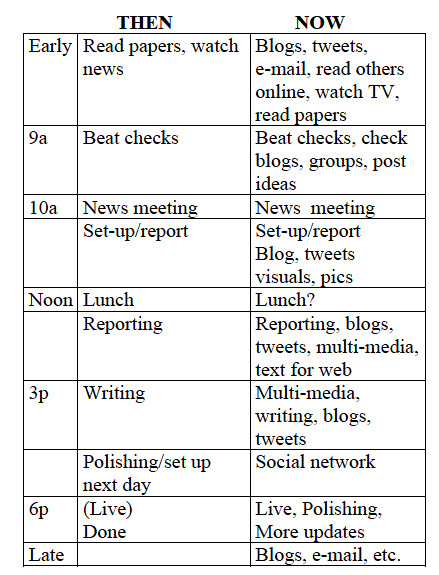Maybe the future isn’t so bad for journalism, after all. There is hope, mostly because so many young journalists see a bright future for journalism.
It’s the end of the fall semester and as I take a breath and take stock of the past 16 weeks I am optimistic. As a professor in the Schieffer School of Journalism at TCU, I have finished classes and turned in grades and feel pretty good, not about the job I’ve done as much as the excitement I found in 18 students.
The 18 made up an honors section of our Introduction to Journalism class, the first time in more than a decade we’ve taught an honors class in our program. I’m glad we did, and that I had the opportunity to teach the class.
What I found with these high school high-achievers in their first semester of college is that they’re excited about journalism and recognize the opportunities ahead.
One of the keys I try to convey to my students is that journalism isn’t dying, even if newspapers in the way we’ve always known them may be.
We don’t have a consumption problem for news. We have a monetization problem.
And, as it turns out, the 18-, now 19-, year-olds may have it figured out more than the rest of us.
One thing they certainly don’t see is a future for paywalls, except for very specialized content. They expect news to be free. It’s what they know.
They’ve always relied on news online, on-demand, wireless and in non-traditional ways.
When I ask where they get their news from the answer is mostly Facebook and Twitter and their favorite news apps.
They’re not tied to the past. They’ve grown up in a world where change happens fast, where technology is evolving. They remember when MySpace came… and went.
So while they may not had previously heard of Spot.Us, the West Seattle Blog or ProPublica they get that journalism is changing. Those models aren’t so crazy. They’re open to new ideas.
When I told them they were required to start their own website and professional social media accounts, it wasn’t such a distant concept. In just a few minutes they could become their own news outlet.
When I gave then an entrepreneurial assignment to develop an idea for a journalistic product or service, they began to see how they could combine their passions (fashion, politics, food and sports among them) with journalism and their own business.
They’re open to all of this.
It’s not that they don’t want to work at CBS News or The New York Times, they just get that there is a lot more to journalism now.
Faced with this timeline I prepared that shows how reporter used to work vs. now, they’re not dissuaded.
They get that the job has changed and they’re fine with it. In fact, they’re just as driven as any young journalists have ever been.
Like many of their contemporaries, they have a strong sense of a social mission. They want to report on the issues that matter. They’re idealistic. I love it.
One student told me how important it was for her to work on a story about Iraq War veterans because her father had served in Vietnam.
Others are frustrated that more people their age aren’t engaged in politics and want to help produce journalism that is relevant about the government and politics for young people.
They know our democracy cannot survive without vibrant journalism and they want to fuel the reinvention.
Let’s not mess it up before they get to do that.









